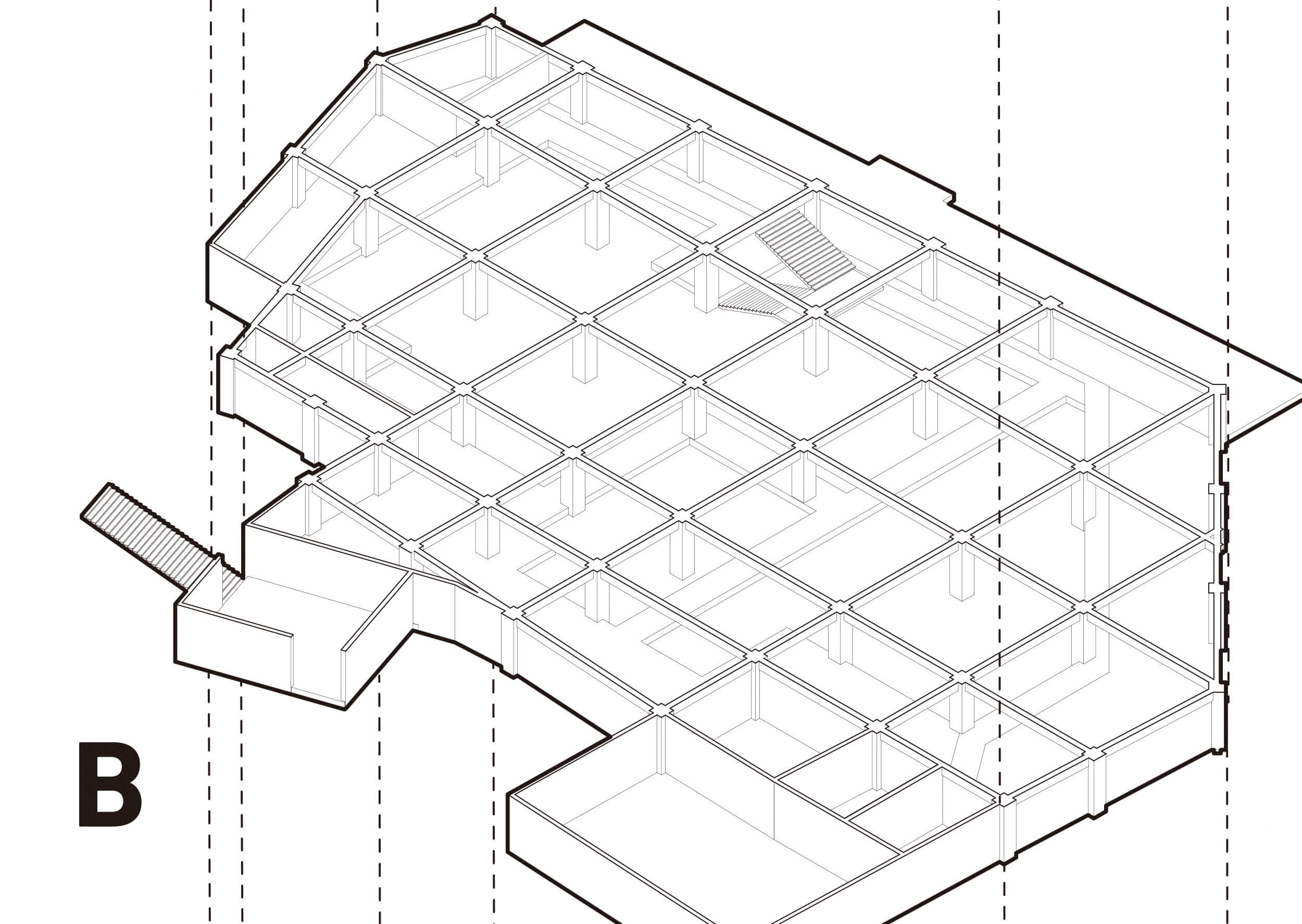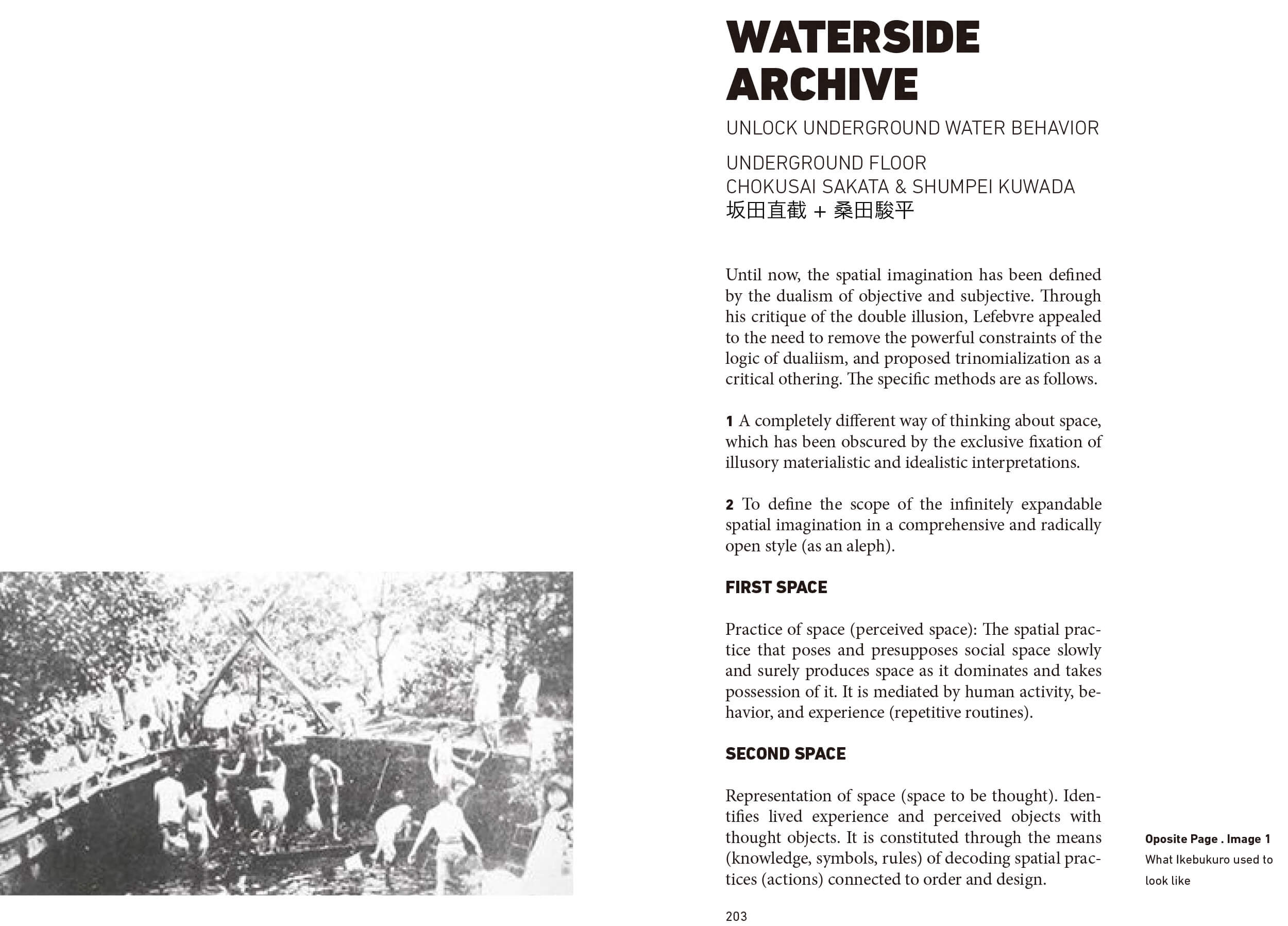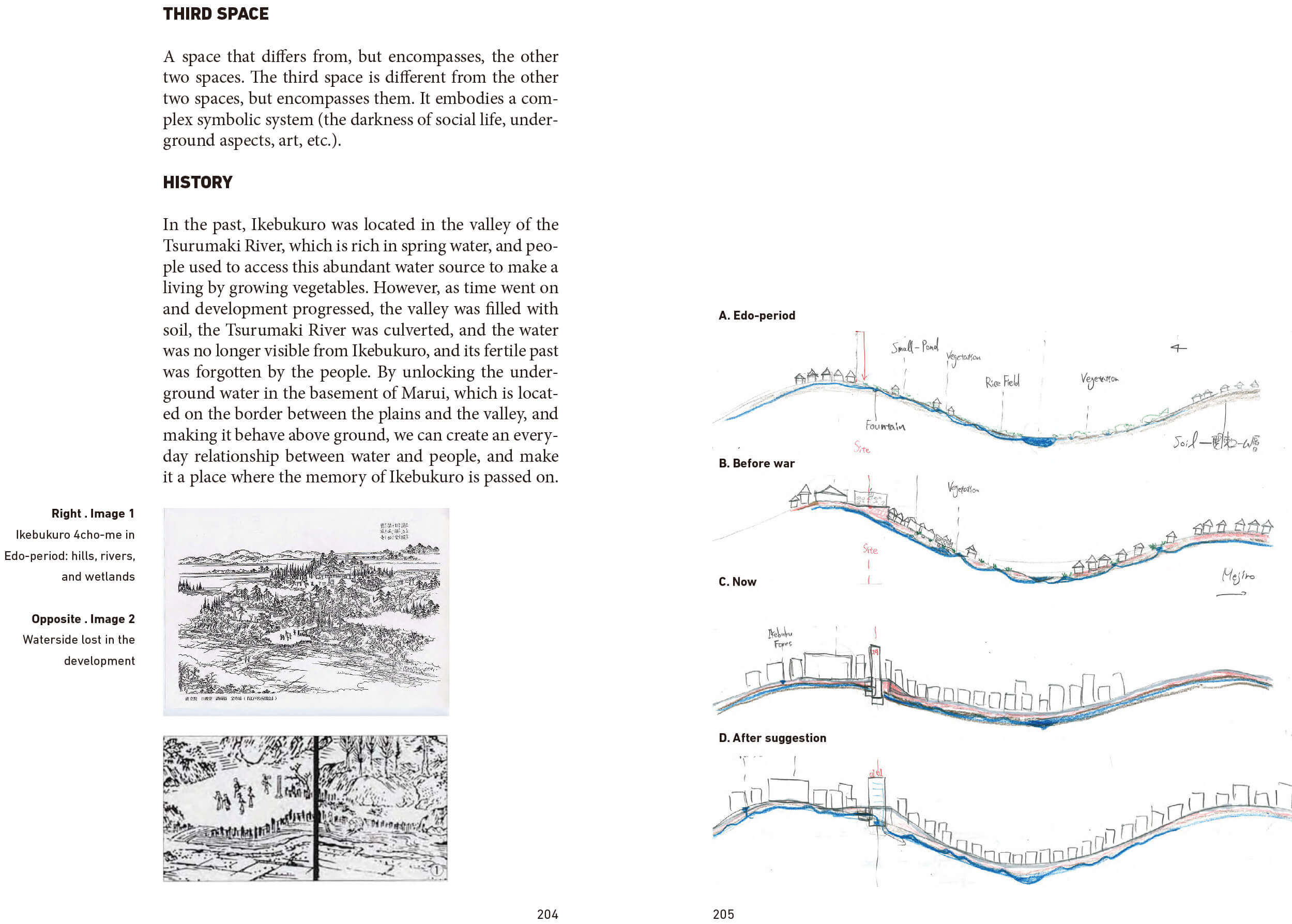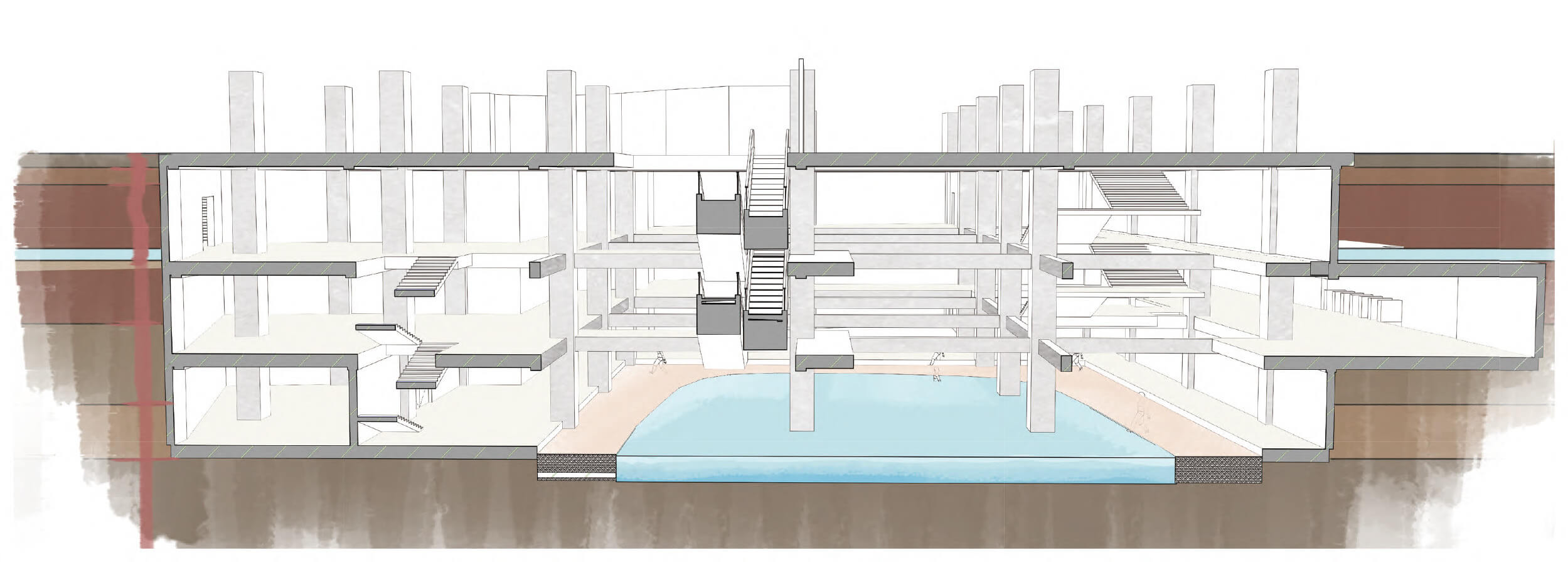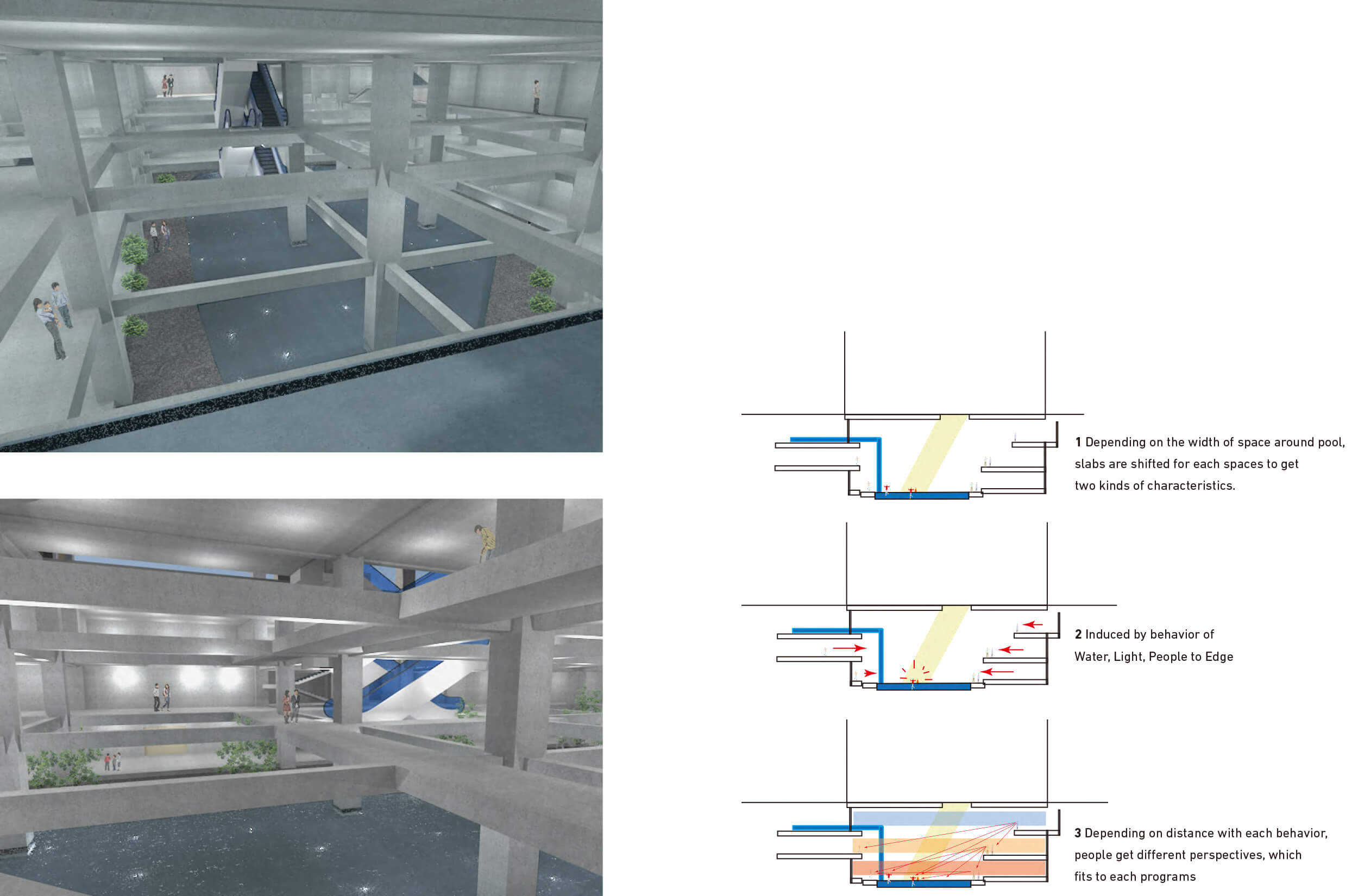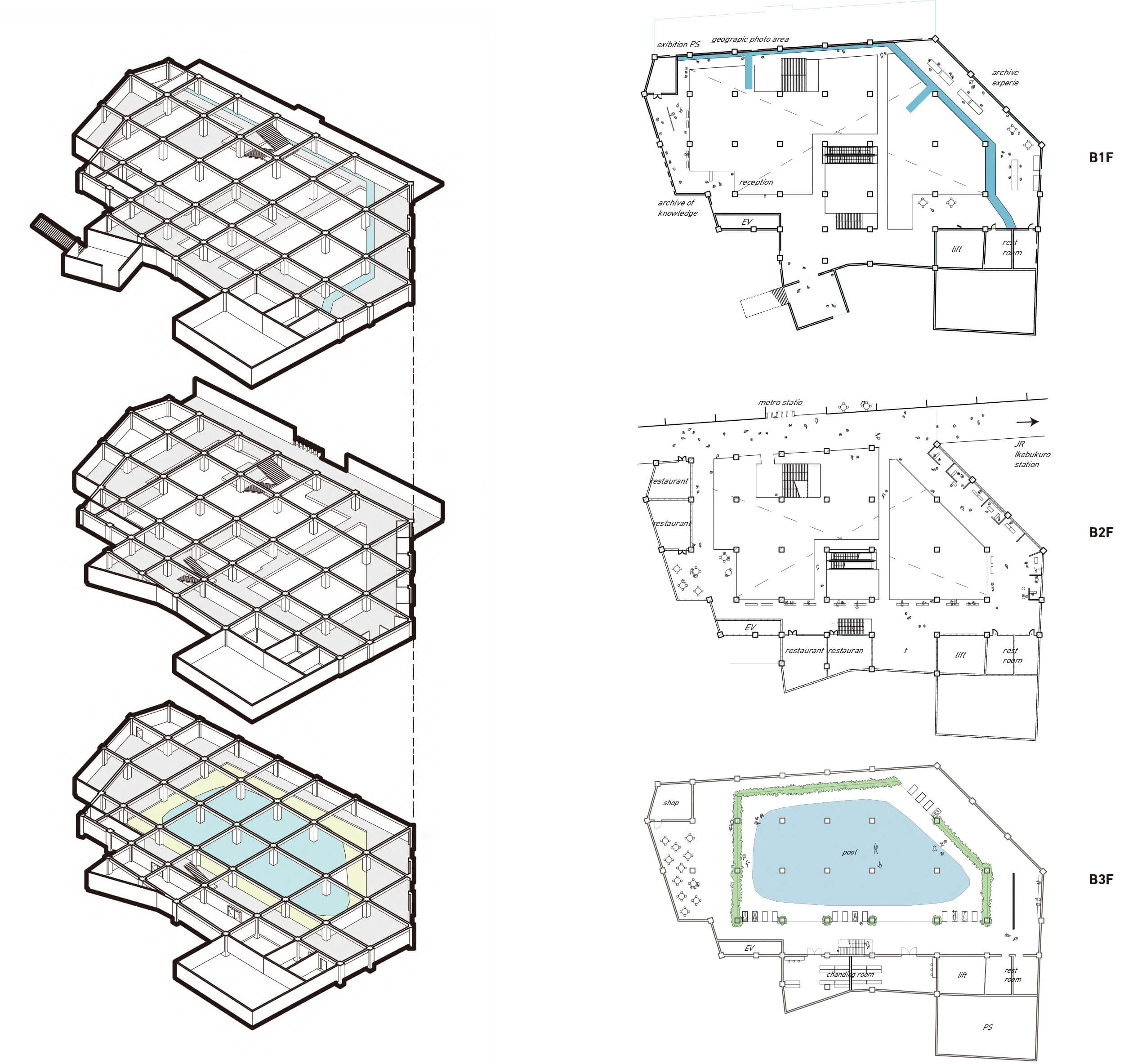Until now, the spatial imagination has been defined by the dualism of objective and subjective. Through his critique of the double illusion, Lefebvre appealed to the need to remove the powerful constraints of the logic of dualiism, and proposed trinomialization as a critical othering. The specific methods are as follows.
1 A completely different way of thinking about space, which has been obscured by the exclusive fixation of illusory materialistic and idealistic interpretations.
2 To define the scope of the infinitely expandable spatial imagination in a comprehensive and radically open style (as an aleph).
FIRST SPACE
Practice of space (perceived space): The spatial prac- tice that poses and presupposes social space slowly and surely produces space as it dominates and takes possession of it. It is mediated by human activity, be- havior, and experience (repetitive routines).
SECOND SPACE
Representation of space (space to be thought). Iden- tifies lived experience and perceived objects with thought objects. It is constituted through the means (knowledge, symbols, rules) of decoding spatial prac- tices (actions) connected to order and design.
THIRD SPACE
A space that differs from, but encompasses, the other two spaces. The third space is different from the other two spaces, but encompasses them. It embodies a com- plex symbolic system (the darkness of social life, under- ground aspects, art, etc.).
HISTORY
In the past, Ikebukuro was located in the valley of the Tsurumaki River, which is rich in spring water, and peo- ple used to access this abundant water source to make a living by growing vegetables. However, as time went on and development progressed, the valley was filled with soil, the Tsurumaki River was culverted, and the water was no longer visible from Ikebukuro, and its fertile past was forgotten by the people. By unlocking the under- ground water in the basement of Marui, which is locat- ed on the border between the plains and the valley, and making it behave above ground, we can create an every- day relationship between water and people, and make it a place where the memory of Ikebukuro is passed on.
